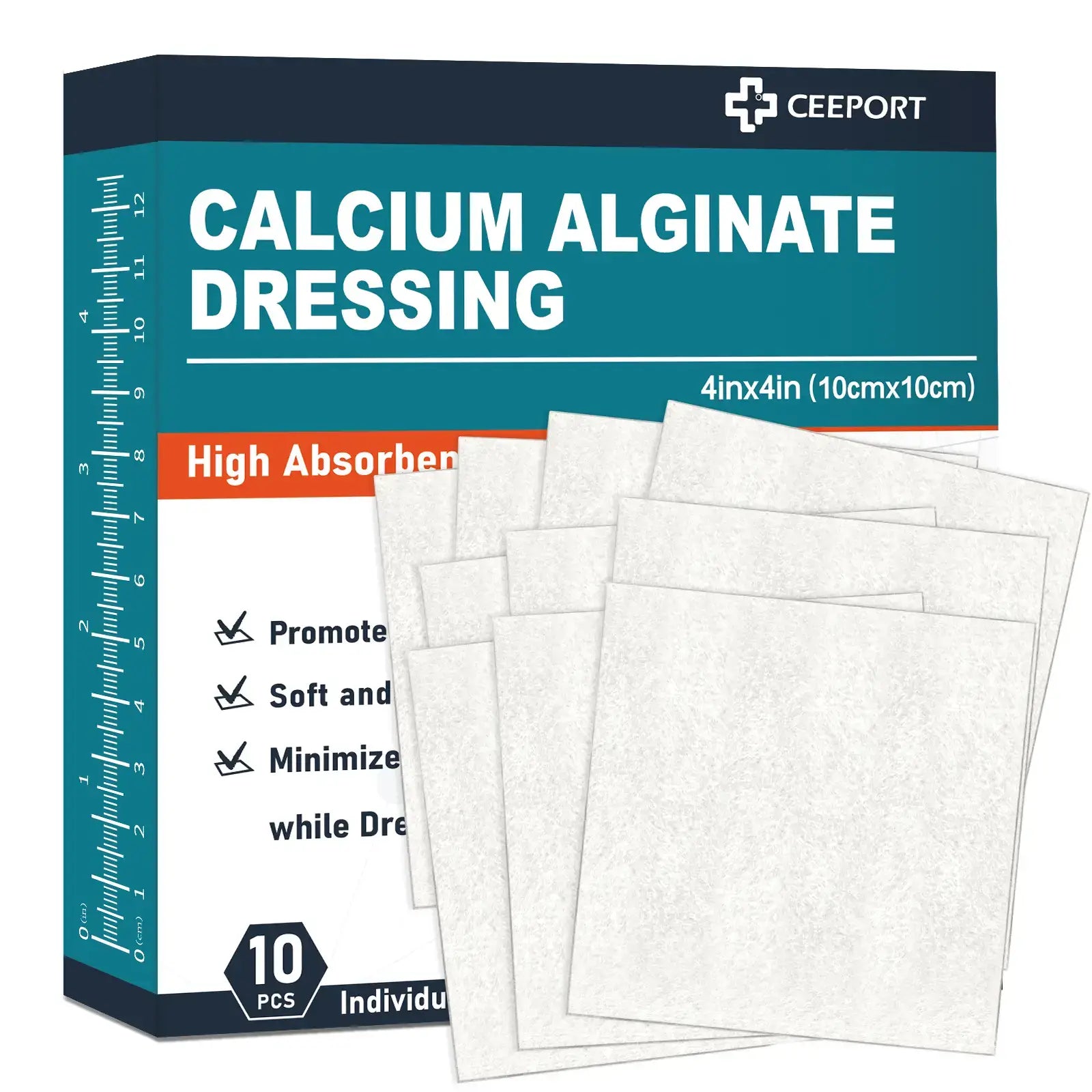
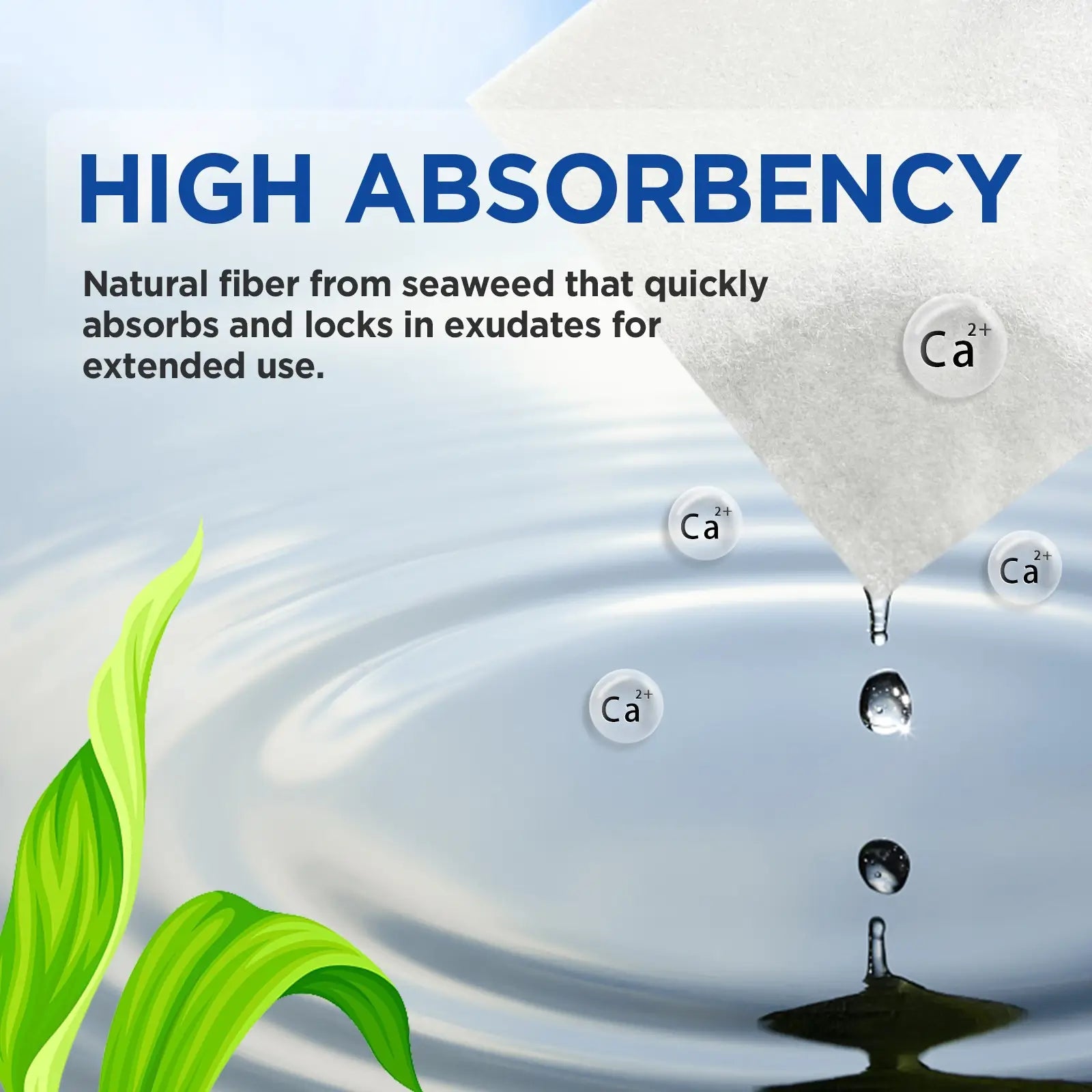
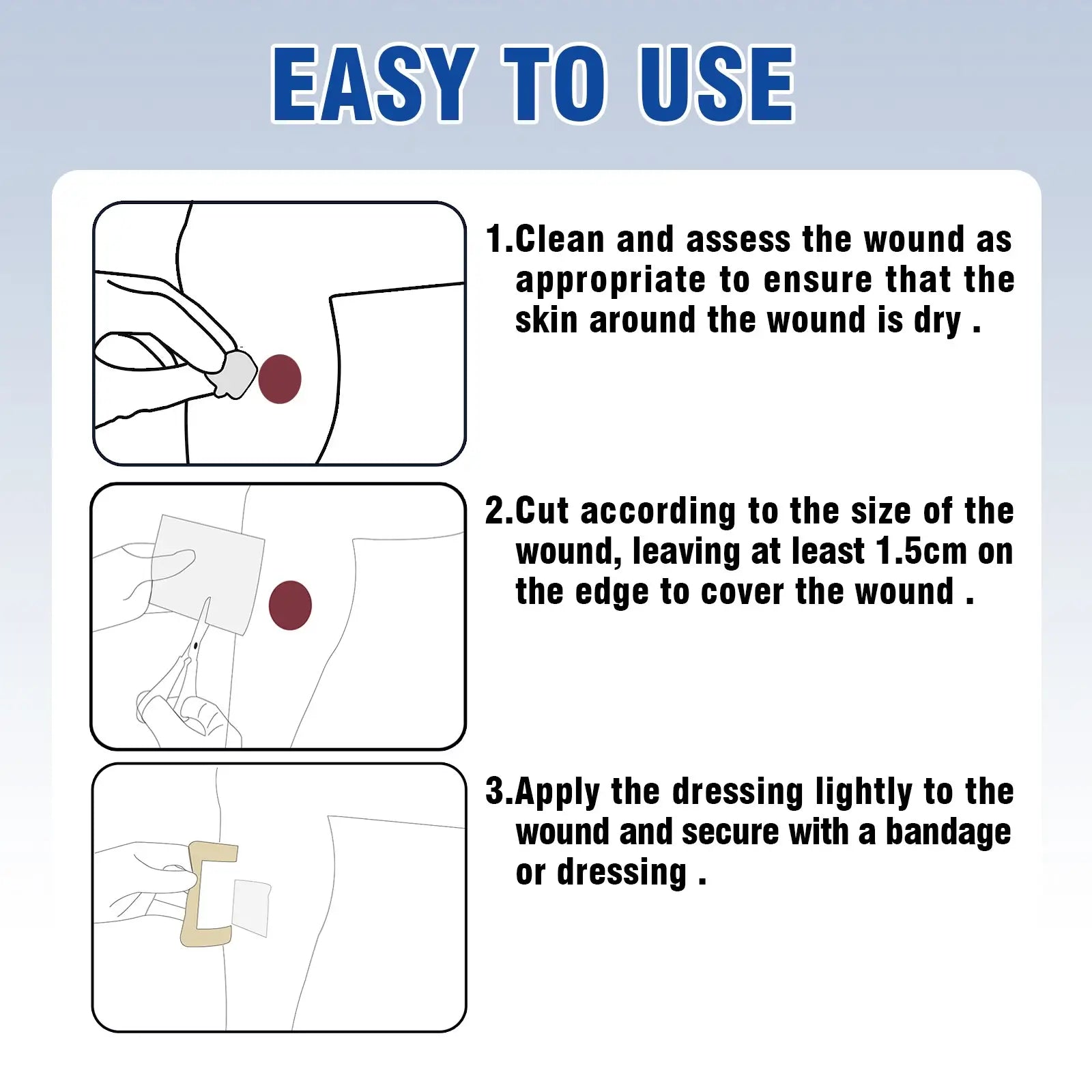

Silver Calcium Alginate: The Best Wound Dressing for Burns—Dual‑Phase Burn Therapy
Indications
This product is suitable for all kinds of medium to high exudative wounds, acute and chronic bleeding wounds, difficult-to-heal wounds, donor site wounds, and various cavity wounds.
For example, ulcers, bedsores, diabetic foot, surgical wounds, sinus tracts, 1st & 2nd degree burns, etc.

Silver Calcium Alginate: The Best Wound Dressing for Burns—Dual‑Phase Burn Therapy
DETAILS
Material
- Natural seaweed
- Calcium ion
Main Mechanism
- It forms a hydrogel on the wound surface, moisturizing the wound and promoting healing.
- The exchange of Ca²⁺ and Na⁺ activates prothrombin, promoting coagulation.
- It protects nerve endings and alleviates wound pain.
- The fibers absorb moisture and swell. Bacteria are trapped between the fibers, providing antibacterial properties.
Key Features
- High absorption capacity
- Excellent wet and dry strength
- Fast gelling
- Promotes healing through a moist wound environment
- Comfortable and soft, painless removal
Cautions
- This product is not suitable for dry wounds.
- Clean the wound and dry the surrounding skin before use.
- Ensure the dressing covers at least 2 cm beyond the wound edge.
- The dressing should not stay on the wound for more than one week.
- When wound exudate decreases, discontinue use of this product and switch to other dressings, such as hydrocolloid dressings.
- When using packing strips, first determine the size and depth of the wound. Start filling from the base of the wound, avoiding dead spaces to ensure proper healing.
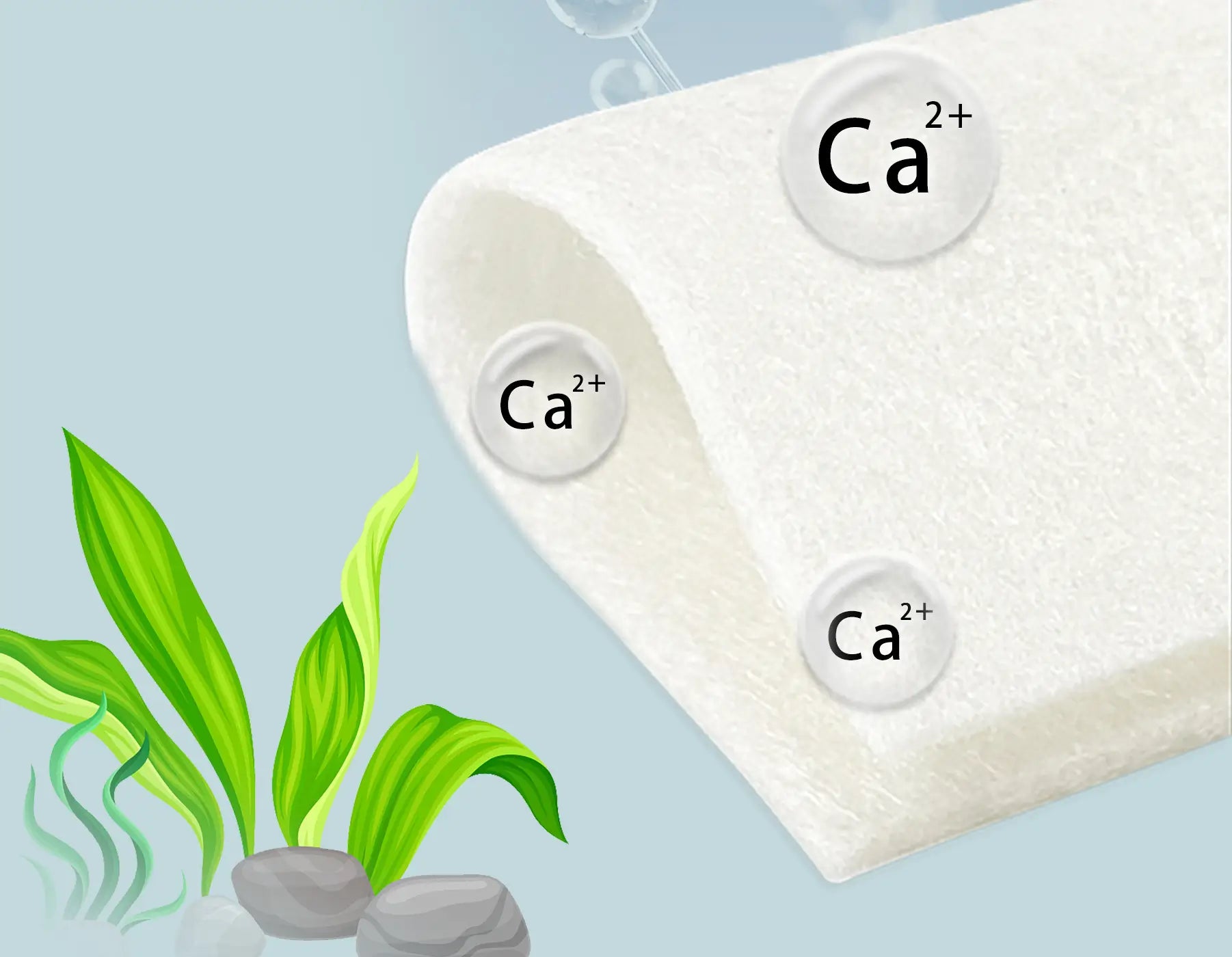
Silver Calcium Alginate: The Best Wound Dressing for Burns—Dual‑Phase Burn Therapy
1. Product Overview
When treating first‑ and second‑degree burns, nothing outperforms our silver calcium alginate dressing—the best wound dressing for burns that fuses powerful antimicrobial silver with ultra‑absorbent calcium alginate. On contact with burn exudate, it instantly forms a cooling, non‑adherent gel that soothes pain and creates a moist environment for faster tissue repair.
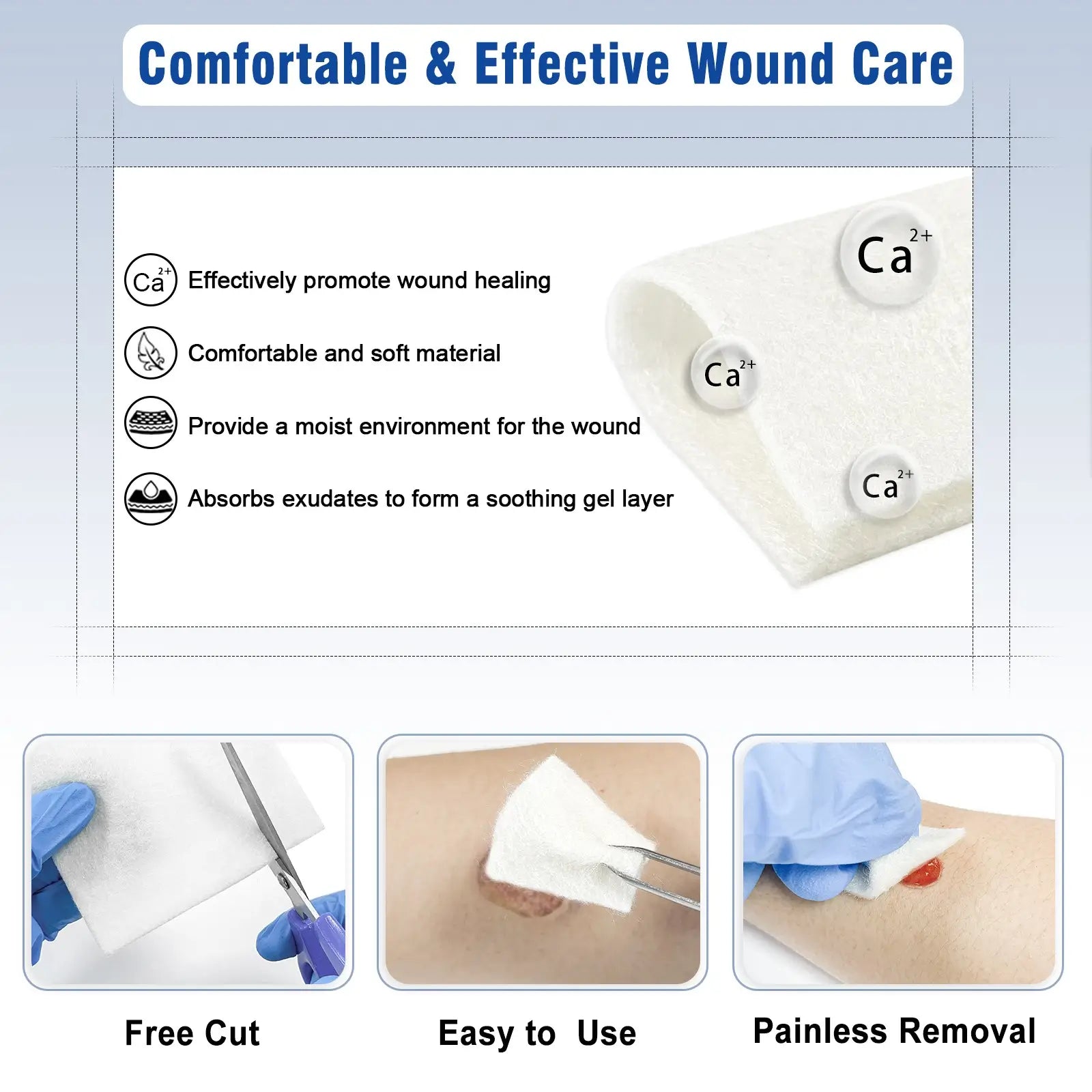
2. Dual‑Phase Burn Therapy
- Phase One: Antimicrobial Shield
The best wound dressing for burns releases silver ions to neutralize bacteria at the wound surface, reducing infection risk in the fragile early stage. - Phase Two: Moisture‑Activated Healing
As a best wound dressing for burns, its calcium alginate fibers absorb up to 20× their weight, converting to a soft gel that locks in moisture, encourages cell migration, and prevents scab formation.
3. Application & Burn Care Protocol
- Clean & Cool: Gently rinse burn with sterile saline, then pat surrounding skin dry.
- Apply & Seal: Trim your best wound dressing for burns to overlap the burn by 1 cm; place gel side down.
- Cover & Monitor: Secure with a secondary non‑stick pad or light bandage. Check daily for exudate levels.
- Refresh & Protect: Replace dressing every 2–4 days or when fully saturated; the gel ensures painless removal and continuous burn care.
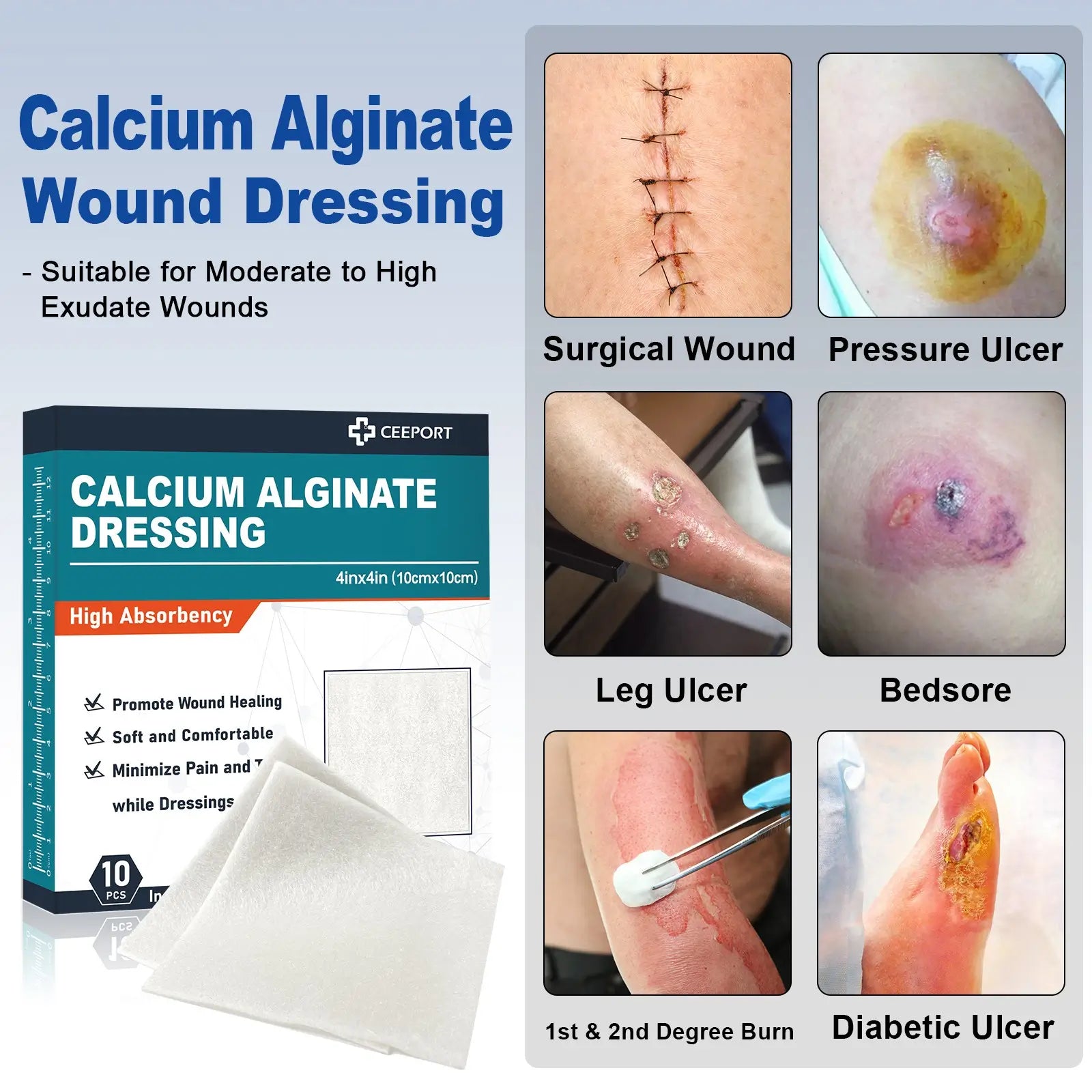
4. Versatile Burn Scenarios
- Kitchen Scalds & Steam Burns: Immediate cooling action and infection control.
- Sunburn Relief: Hydrating gel soothes heat‑damaged skin without stickiness.
- Traumatic Abrasions: Cushions and protects against friction on limbs.
- Active Lifestyles: Whether at work or play, this best wound dressing for burns stays in place through movement and moisture.
Elevate your burn first‑aid kit with silver calcium alginate—the best wound dressing for burns designed for comfort, protection, and accelerated healing.
Easy to Use

1. Clean
Clean and assess the wound asappropriate to ensure that the skinaround the wound is dry.
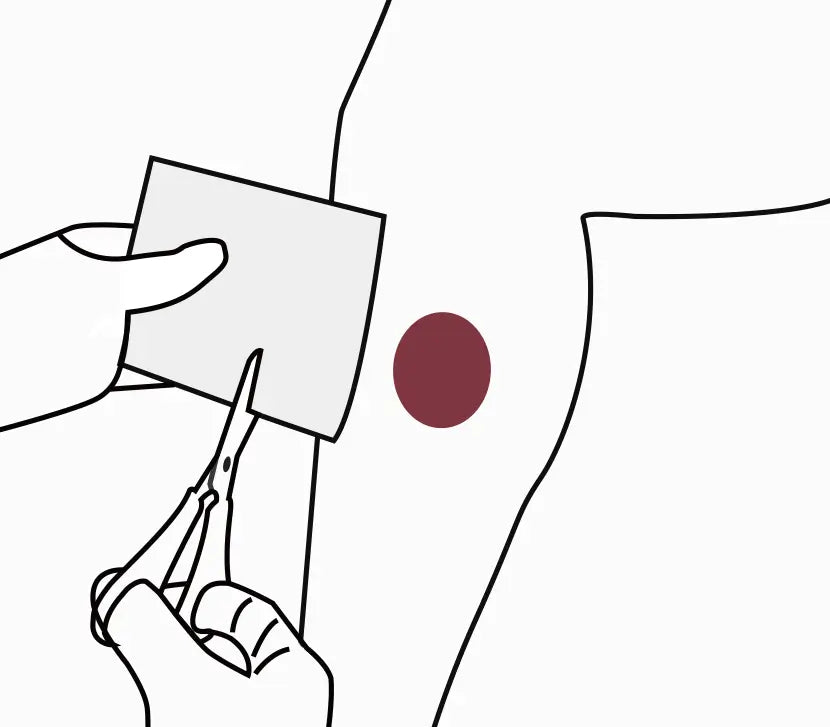
2. Cut
According to the size of the wound, cut it to the appropriate size.
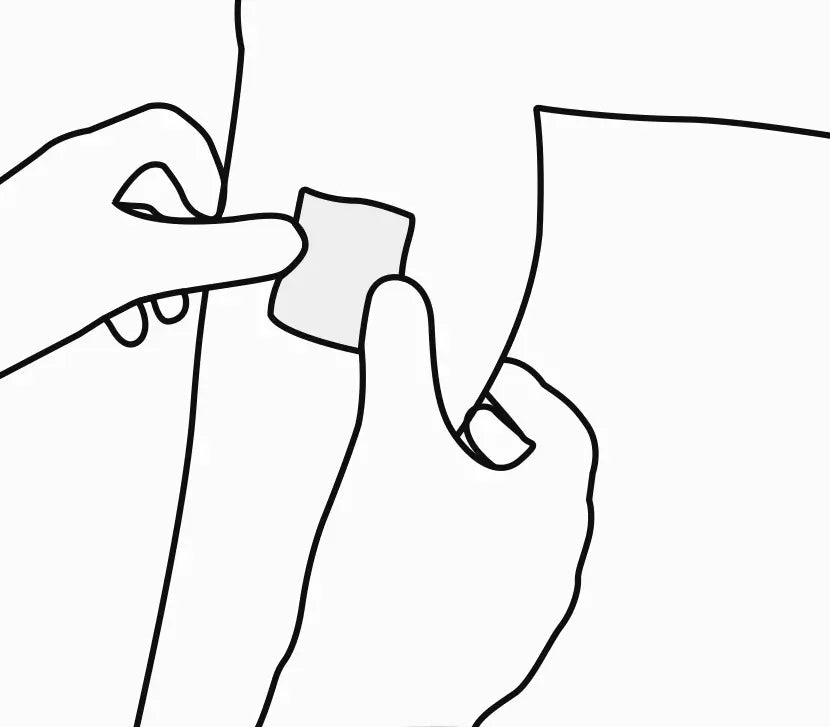
3. Apply
Apply the wound dressing to overlap the wound edges at least 1 cm.
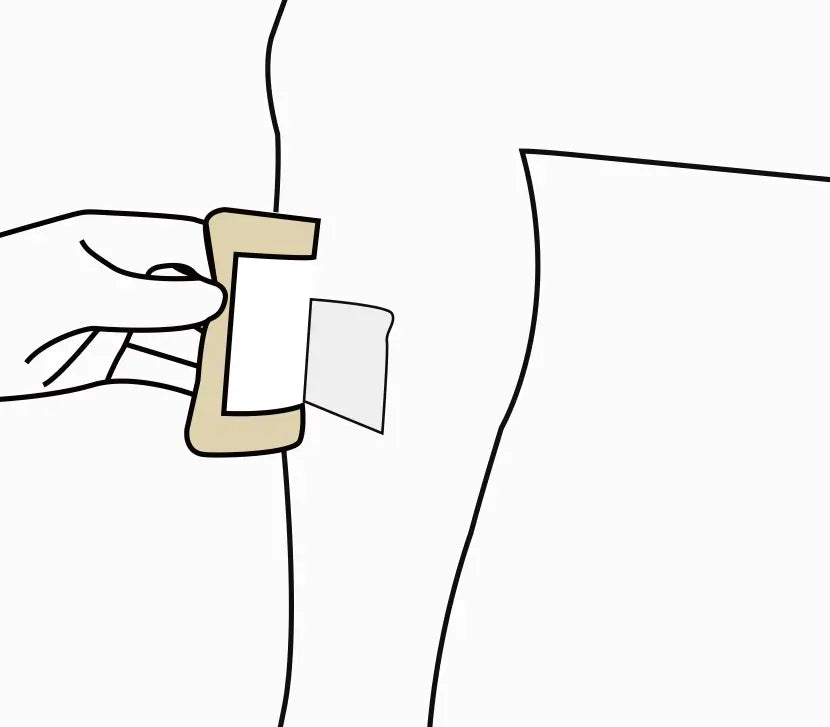
4. Fix
Fixed it with a bandage or dressing.
You asked, we answered.
What is a calcium alginate dressing used for?
Calcium alginate dressings are commonly used to manage moderate to heavily exuding wounds, including pressure ulcers, leg ulcers, surgical wounds, and burns. They are designed to absorb excess exudate while maintaining a moist environment that supports wound care.
How does a calcium alginate dressing work?
When the dressing comes into contact with wound exudate, the calcium ions in the alginate fibers react to form a soft, gel-like substance. This gel helps to absorb fluid and conforms to the wound bed, creating a protective layer that assists in managing moisture and minimizing the risk of maceration.
Can calcium alginate dressings be used on dry wounds?
No, calcium alginate dressings are not suitable for dry or minimally exuding wounds. They require moisture to activate their gel-forming properties. For dry wounds, a different type of dressing designed to hydrate the wound may be more appropriate.
How often should a calcium alginate dressing be changed?
Dressing changes depend on the level of wound exudate. Typically, calcium alginate dressings are changed every 1 to 3 days or when the dressing becomes saturated. Always follow healthcare provider instructions for dressing changes.
Is calcium alginate dressing safe for sensitive skin?
Yes, calcium alginate dressings are generally well-tolerated and are made from natural seaweed-derived fibers. They are non-adherent, which means they are gentle during removal and help reduce trauma to the wound site.




